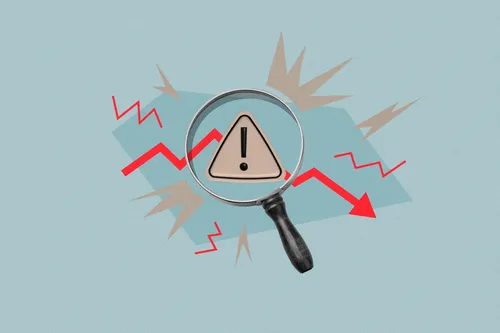Work Wellness
What They’re Really Asking: How to Decode Investor Questions
You might get different questions than men, but you belong in the room. Here's what investors are really asking and how to answer with confidence.

- Published
- Category
- Work Wellness
Related Articles
If you’re a female founder who’s ever fundraised, chances are you’ve walked away from a pitch feeling... off. Maybe the questions felt subtly condescending. Maybe your idea was met with polite nods but not genuine curiosity. You might’ve sensed that you weren't being taken quite as seriously as your male peers, despite being just as prepared.
You’re not imagining it. Female founders are often asked different questions than male founders—questions that can reveal unconscious bias or a lack of understanding about the problem your business is trying to solve. It’s not uncommon for an investor to circle back with, "I told my wife about your idea, and she thought it was brilliant." Great—but why did it take a second opinion to see the value?
To help you decode what’s really being asked—and how to answer with clarity and confidence—we tapped brand expert and founder advisor Dayna DeStefano.
“But how big is the market?”
What they’re really asking: Is your idea too niche or too female-focused to scale?
When you pitch a solution to a problem most investors have never personally experienced, they may struggle to grasp the size of the opportunity. But that disconnect doesn’t mean the market isn’t there. In fact, women drive 85 percent of consumer purchasing decisions—a staggering amount of economic power that’s often overlooked simply because many products built for women are pitched to men. They may not fully grasp the scale of the opportunity, but that’s not because it isn’t there—it’s simply outside their frame of reference.
How to answer: Flip the script by grounding your answer in hard data and a clear growth strategy.
"We’ve validated demand through quantitative data [early sales, surveys, or waitlists], and our target customer is ready to buy. The timing is right because we’re solving a real need with a unique value proposition—and I’m uniquely positioned to bring it to market."
Pro tip from Dayna:
“Your Total Addressable Market (TAM) isn’t just a slide—it’s the foundation of your funding story. Female founders often define it too narrowly, but to attract investment, the opportunity needs to feel big and inevitable. Basically, the math needs to math. Put yourself in the investor’s seat: Will this business deliver the kind of return they need? That answer is rooted in market size. Your projections should reflect not just where you are, but how big this can become.”
“What’s your plan for scaling the business, and how do you see your role evolving as you grow?”
What they’re really asking: Can you, personally, grow this company into something big?
Founders who don’t look like the traditional archetype (read: white, male, tech bro) often face more scrutiny around leadership and “grit.” But the ability to scale doesn’t hinge on gender—it hinges on vision, adaptability, and team-building.
How to answer: Back yourself while showcasing how you’re building smart, not solo.
"We have a clear roadmap for growth, and I’ve built the right support around me to scale it. I know my strengths and bring in the right people to fill the gaps. This isn’t about doing it all myself but building a business that grows beyond me."
Pro tip from Dayna:
"If you do pursue funding, know your strengths, blind spots, and how you'll evolve. Show investors that your plan includes growing the team—and yourself."
“Is this just a lifestyle business?”
What they’re really asking: Are you serious about growth, or is this just a fun side project?
When investors label something a “lifestyle business,” it’s often laced with condescension. The implication? That it’s soft, small, and unserious—a bias female founders in wellness, media, and CPG know all too well. But here’s the truth: If you’re fundraising, your business shouldn’t just look good—it should be good. Profitable. Scalable. Backed by real momentum (such as early revenue, user growth, or waitlist demand) or a compelling roadmap that proves you’re building something with traction.
How to answer: Lead with clarity around your growth model, market opportunity, and long-term vision.
"This isn’t a lifestyle business—it’s a long-term growth play. We’ve validated demand and mapped out a scalable model through [channels or partnerships]. I’m building something profitable, sustainable, and positioned to lead."
Pro tip from Dayna:
“Be crystal clear on why your business belongs in the room. Lifestyle businesses aren’t bad, but they can sometimes lack the scale that a venture-backed business needs. If you do have a lifestyle business, you need to be extra strategic and innovative about the underlying business model. Ask yourself: Is this investable right now? If yes, bring the numbers, vision, and strategy to prove it. If not, that’s OK—just don’t waste time pitching a model that doesn’t match how VCs invest.”
“What systems do you have in place to manage the demands of leadership?”
What they’re really asking: Will being a woman (and maybe a mother) get in the way of running your business?
This is often a stand-in for the unspoken: "Will your life get in the way?" It’s rarely asked of male founders, but it reveals a deeper bias: the belief that women are inherently less available, less focused, or less committed because of everything else they’re juggling. But the reality is that most women founders are already managing more complexity in a day than many of their male counterparts, and that’s actually an advantage.
How to answer: Give them the truth—and the tactical plan.
"I manage this business the same way I manage everything else—with structure, support, and clarity. I’ve built systems around my strengths and designed the team and tools I need to lead effectively as we grow."
Pro tip from Dayna:
"You don’t need to know how to do everything—you just need to be agile, open-minded, and surround yourself with people who [can fill in the gaps]. Leadership is about designing systems that work for your life and values. And if you are juggling a lot already, say so. That’s not a weakness—it’s proof of your capacity.”
“What makes this the right time for this product or solution?”
What they’re really asking: Is this the right moment, or just your moment?
For female founders innovating in overlooked or unfamiliar categories—like menopause, period care, or caregiving—this question can feel dismissive. But it’s also a moment to anchor the conversation in hard evidence and smart positioning. Investors want proof that the timing is right and that you are the right person to bring this solution to market.
How to answer: Lead with examples of early traction, then explain what sets you apart.
"We’ve already seen strong demand signals through [beta tests, early sales, or community traction]. There’s a clear gap in the market, and we’re uniquely positioned to fill it, with the product, the brand, and the timing to win."
Pro tip from Dayna:
“Belief isn’t enough. You need quantifiable traction, even if it’s scrappy: a waitlist, early revenue, or a test audience that converted. And beyond the numbers, be ready to explain why you’re uniquely positioned to win, whether that’s a product edge, a built-in community, or lived experience others don’t have. If you’re raising money, you should already have proof that people want what you’re building.”




